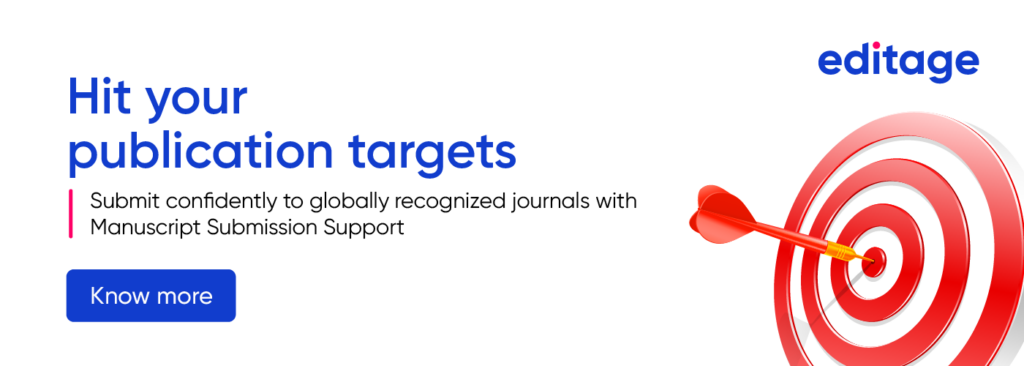
|
Getting your Trinity Audio player ready...
|
Understanding the journal submission platform and process
The process for submitting a manuscript to a peer-reviewed journal begins with selecting the appropriate journal. Once chosen, the journal will direct you to their online submission platform. These vary by journal but generally require setting up an account, which serves as your communication hub. Here, you can submit your manuscript, track its progress, and receive updates and feedback.
When setting up your account, be sure that that the person doing so is prepared to monitor communications from the journal, manage submissions and uploads, and otherwise take care of the manuscript submission process. The person doing this work can be anyone (it doesn’t have to be the first author, for example). However, they should be someone comfortable working with the online platform and comfortable dealing with managing and uploading various electronic files such as the manuscript, figures, and any supplementary materials.
A submission checklist
After understanding the journal submission platform and process, the next crucial step for first-time authors is to complete a submission checklist. Some journals provide a checklist, but in all cases, you should make sure that you cover the following items:
Manuscript: Ensure your manuscript is formatted according to the journal’s guidelines, including all requirements for text formatting, headings, and references.
Title Page: Include a title page with the title of your manuscript, authors’ names, affiliations, and contact details. Some journals require a separate title page to ensure blind peer-review.
Abstract and Keywords: Prepare a concise and informative abstract that summarizes the main findings of your research. Include relevant keywords to enhance the discoverability of your paper.
Figures and Tables: Ensure that all figures and tables are properly labeled and formatted. They should be comprehensible without referring to the text, and their quality must comply with the journal’s standards. Note that this can be one of the most time-consuming steps in the submission process, so be sure to set aside extra time here!
Supplementary Material: If your study includes supplementary material, such as datasets or extended methods, ensure they are ready for submission and formatted as per the journal’s guidelines.
Cover Letter: Draft a persuasive and informative cover letter (see next section).
Conflict of Interest and Funding Statements: Disclose any potential conflicts of interest and acknowledge your funding sources.
Ethics Statement: If applicable, include a statement about the ethical approval of your study or the waiver thereof.
Check for Plagiarism: Prior to submission, check your manuscript for any unintentional plagiarism.
The importance of a good cover letter and what to include
A well-crafted cover letter can be a pivotal component in the manuscript submission process, so it’s worth spending a little extra space in the blog to discuss it here. The cover letter is likely first element that journal editors read, so it should be concise, persuasive, and directly address the significance of your work. Here’s what to include:
Introduction: Begin with a brief introduction that includes the title of your manuscript and the journal you are submitting to.
Objective: Clearly state the objective of your research and its relevance to the field. This helps editors quickly grasp the essence and importance of your study.
Novelty and Contribution: This is the most important component of the letter. Highlight the novelty of your research and its potential contribution to the field. Explain what makes your study unique and how it advances current knowledge.
Fit for the Journal: This is probably second in importance after the novelty and contribution. Demonstrate why your manuscript is a good fit for the journal. Reference the journal’s scope and relate your study to topics of interest published in the journal.
Confirmation of Compliance: Confirm that your submission adheres to all the journal’s guidelines. Include a statement that your manuscript has not been published elsewhere and is not under consideration by any other journal.
Co-Authors and Conflicts of Interest: Mention your co-authors and confirm that there are no conflicts of interest. If there are any, disclose them clearly.
Closing Remarks: Conclude with a statement expressing your willingness to make revisions and thanking the editors for considering your manuscript.
What to expect after submission: timelines and communication
After submitting your manuscript, the process typically begins with an acknowledgment from the journal, followed by an initial screening for adherence to submission guidelines and the journal’s scope. If successful, your manuscript enters the peer-review stage, which varies in duration and involves detailed evaluation by field experts. Following this, a decision is made to accept, reject, or request revisions, accompanied by valuable reviewer feedback. Post-acceptance, expect a phase of final editing and proofreading. We’ll detail these steps in a future blog post, but for now, just know that it’s essential to maintain professional and prompt communication with the journal throughout the process.
Check out Editage editorial services here










Leave a Reply